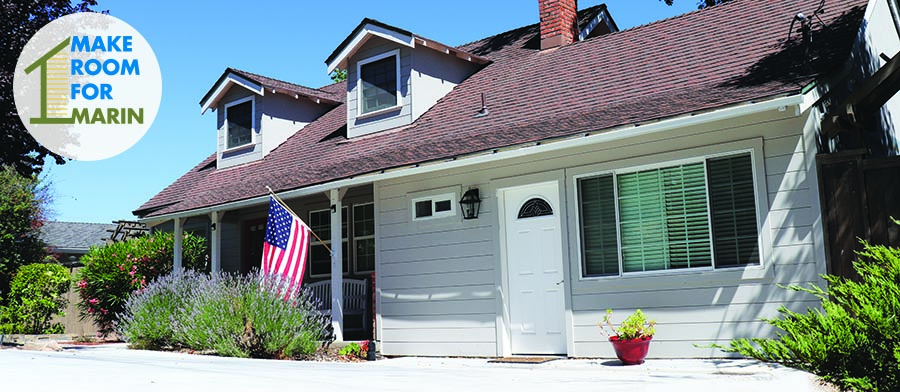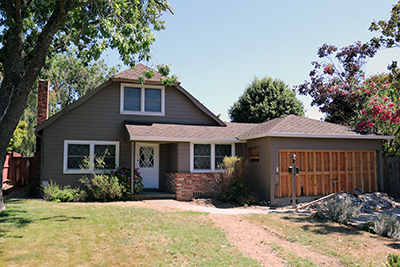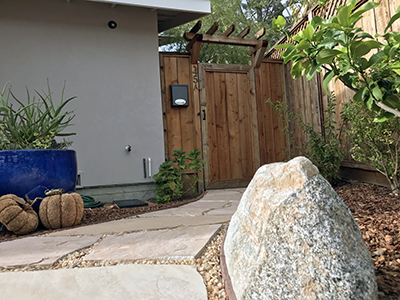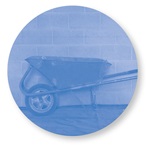
Make Room For Marin: A Guide to Accessory Dwelling Units
Do you dream of a backyard cottage to house a relative? Have you been thinking about transforming your garage into a unit that will generate income in your retirement? You can help address the housing crisis in Marin by creating a home for a valuable member of your community.
Now is a great time to build an ADU or JADU; recent modifications in state law have made it easier and more affordable. This website provides a general guide for everything from design considerations to the permitting process. Please consult your local jurisdiction for more detailed information.
Second units are known by many different names. You may be familiar with in-law units, backyard cottages, second units; planners call them ADUs (Accessory Dwelling Units) and they come in many different forms. Second units can be attached or detached from a home, they can take the form of a converted garage or even a new building in a backyard. JADUs (Junior Accessory Dwelling Units), created within an existing single-family home, may also be an option for you. California legislation that went into effect on January 1, 2017 gave local government more flexibility and latitude for allowing homeowners to build ADUs and JADUs.

Convert
Convert
Ways to Convert:
- Redesign a former garage space,
- Renovate a backyard guest house, or
- Reimagine an underused room in your home
Benefits of Converting:
- Potentially less expensive than reconfiguring or constructing a new unit
- Keep your backyard intact
- If you’re converting a garage, could provide onsite parking in garage’s driveways and apron
Disadvantages of Converting:
- Depending on the age and condition of your home, could trigger additional construction projects
- Lack of privacy in some cases
- Could be small, therefore not generating as much income as some other unit types

Construct
Ways to Construct:
- Build a free-standing structure
- Build a unit that shares a wall with the primary home
Benefits of Constructing:
- Potential to build a larger unit with outdoor amenities
- o Build a unit that shares a wall with the primary home
Disadvantages of Constructing:
- More expensive than reconfiguring or converting an existing structure
- Could encroach on outdoor space

Intro
You can use this website as a tool to guide you through the process of transforming your garage or basement, build an addition to your home, or construct a detached unit. Suburban and rural communities across California are recognizing the many benefits of ADUs and JADUs:
- Improve air quality and decrease traffic congestion by expanding housing opportunities for Marin workers.
- Create auxiliary income streams for homeowners.
- Support older adults wishing to age in place by encouraging more local homes for caregivers to live in.
- Create economical housing options in areas with great schools, jobs, and amenities.

Getting Started
Congratulations on utilizing the opportunity to convert, reconfigure or construct an additional unit on your property! Before you start the design process, check with your local jurisdiction to clarify what rules apply to your home and the application and development fees that will likely be required at the time you submit permit requests and later when you're ready to pick up your approved permit and plans. Marin jurisdictions have tailored accessory unit programs to fit their local needs. Unsure of your jurisdiction? Check here or find your jurisdiction below.
When you’re getting started, think about why you want to build, what your budget range looks like, and any other opportunities or site constraints.
The built environment is responsible for approximately 39% of greenhouse gas emissions. Consider energy efficient features or upgrades to your home. For more information visit the County of Marin Sustainability Team’s website and their Homeowner Resources Kit to learn about direct installation, financing programs and rebates. Green modification subsidies are also available through Green and Healthy Homes Initiative. Homeowners looking to make energy efficiency improvements can receive no-cost, one-to-one assistance to help navigate energy efficiency projects (identifying cost-effective projects, reviewing bids from contractors, finding contractors, etc.) and energy efficiency-related rebate and financing programs by calling a Home Energy Advisor at (866) 878-6008.
It’s important to consider universal design standards for your project so that your future unit is accessible for everyone, at all stages of life. To discover ways to make your ADU or JADU more accessible, check out this resource published by the California Department of Housing and Community Development.
Financing may be available to property owners who are interested in developing or converting units that can be rented at rates affordable to lower-income tenants. If you are a low-income homeowner, consider applying to the Residential Rehab Loan Program for a low-interest loan.
Jurisdictions:
The following Jurisdictions have Accessory Dwelling Unit and/or Junior Accessory Dwelling Unit Ordinances:

Design
Before you select a designer, it is important for you to determine your design goals for the project. Refer to your jurisdiction’s Planning Department for more information.
You will need to hire an architect or a designer that will help you realize your vision and guide you through the construction and permitting process. Alternatively, if you are confident in your construction experience you can choose to be the “owner-builder” and facilitate the process yourself. Below is a checklist you may want to use to help you find the perfect design team. Remember, plans do not need to be prepared by architect or engineer provided they meet specifications within the California Residential Code.
Identify Your Project Team
Ask friends, family or colleagues if they have recommendations for a design team
Prepare a list of questions that you’d like prospective design teams to answer. Consider asking about their familiarity with your jurisdiction’s permitting process. You might also ask for examples of past work – is it compatible with your design goals, aesthetic, and cost expectations?
Ask for references and be sure to follow up on them.
Are they a licensed contractor or do they work with a licensed contractor? (Go to cslb.ca.gov to verify)
Get at least three bids for comparison.

Permit
Permits are required before you start building your ADU or JADU. The permit process is important as it upholds safety standards and enforces building codes to make buildings safe for you and your community. Remember to build permit and development impact fees into your cost for design and construction. In addition to the basic fees for filling building and planning permit applications, property owners may be charged a variety of other fees, such as road and school impact fees, special traffic mitigation fees that apply in certain areas, sewer and water connection fees, and fire department review fees. More information regarding fees is available here. Contact your local jurisdiction for the permit process steps and fee information. You may want to meet with them before you apply for permits to discuss any issues related to your draft designs and potentially expedite the permitting process. The process may vary based on your project’s scope and jurisdiction. For example, if you are building a JADU entirely within a residence your permit process will be different than if you are building a separate, detached dwelling unit.
As you start the permit process, you may want to ask your planning department and refer to the building code regarding the items below:
What are the floor area requirements, setback requirements, and/or height limits for your property?
Do you need to attain a special zoning permit and/or is there a design review process required for your property?
Can your current septic and/or well system accommodate an ADU or JADU?

Construction
If you used an architect or designer to create drawings for the project, you will need to hire a contractor to build it. Below are some steps to take when hiring a contractor:
Ask friends, family or colleagues if they have recommendations for a contractor.
Share your drawings, budget considerations, and ideal construction schedule with prospective contractors.
Request to see prospective contractor licenses, references, and examples of past work.
Check that your contractor is licensed or otherwise working with a licensed contractor. Verify their license on the Contractors State License Board website.
Get at least three bids for comparison.
Before you select the contractor, meet with them in person and determine whether you will be able to work well together
After you’ve selected the contractor, make sure to verify their license and review their contract
Review this helpful checklist of advice from the State Contractors State License Board.
During construction, make sure to communicate with your contractor on a regular basis and walk through the site regularly to monitor progress. Keep in mind that a final inspection is necessary before you receive a “certificate of occupancy,” which means that your new unit is ready for people to live in.

Move In
Once you have a certificate of occupancy, it’s time to get a business license and find a tenant. Contact your local jurisdiction to learn more about licensing requirements.
Review the Guide to Residential Tenants’ and Landlords’ Rights and Responsibilities published by the California Department of Consumer Affairs for an overview of California laws that regulate certain aspects of the rental housing market. You should also talk to your local jurisdiction about regulations that might apply. Consider signing up for a training on fair housing law offered by Fair Housing Advocates of Northern California.
To advertise your unit, you will need to set the rent. If you financed your construction with a loan, consider the loan length, interest rate and any reserve funds you have. Consider pricing your unit so that it is affordable for the local workforce including teachers, fire fighters and families who may not be able to afford high rents in the county. The Marin Housing Authority’s Landlord Partnership Program aims to expand rental opportunities for families holding housing choice vouchers. You could also start with California Associate on Realtors Residential Lease Agreement.